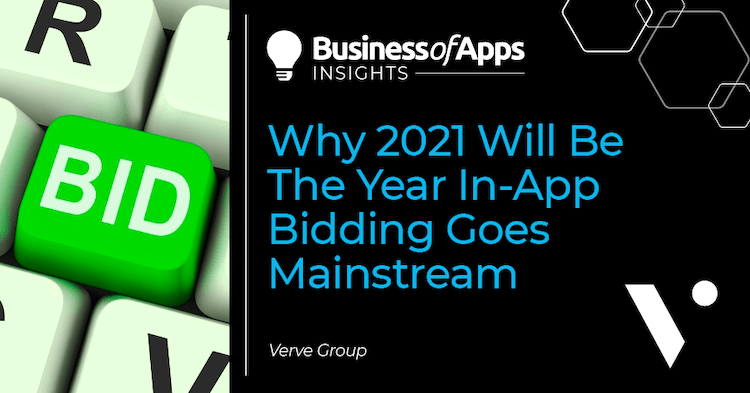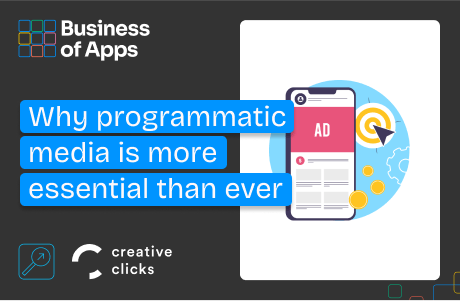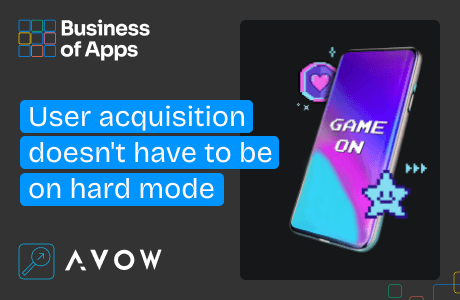In-app advertising’s evolution toward a more transparent and sustainable future is well underway, but the process — especially compared to the transition we saw in desktop — can feel frustratingly slow. This is especially the case for publishers eager to tap into more efficient and profitable processes for selling their inventory.
In 2021, we’re going to see increased urgency in the push to migrate from traditional waterfall setups to more equitable in-app bidding models. Although this push is not new, this year will represent a tipping point for the widespread adoption of in-app bidding. Let’s take a look at why it’s taken us so long to get here as an industry — and why the long road has been worth it.
The forces that are holding back in-App bidding
As in the desktop world, real-time parallel bidding helps boost mobile publishers’ ad revenue by maximizing auction results and increasing efficiency. It also reduces latency, which is a crucial factor for mobile users. At the same time, it eases operational overhead since monetization managers no longer need to manage as many line items and network placements in their mediation.
So, given all these benefits, what’s been the hold-up on widespread adoption? Here are just a few of the factors at play:
Limited participation: Early in the migration to in-app bidding, companies took sides — and decided not to let others use their bidders. For that reason, many of the current in-app bidding solutions on the market only have a handful of partners participating in their auction, meaning their ad opportunities cannot be maximized.
Implementation challenges: Rather than jumping straight into in-app bidding, most app publishers are migrating first to hybrid setups where waterfalls and in-app bidding work hand-in-hand. Even for seasoned monetization experts, these setups can be complicated to understand, which makes it difficult to stay engaged in the integration process. Likewise, in-app bidding integration requires some important changes on the client-side, and testing takes time.
Solution limitations: Many tech solutions for in-app bidding are relatively new or still in development. Likewise, many of the existing solutions only focus on one particular format. While display ads are the most common format purchased in-app, other formats, like rewarded video, have been gaining traction in the industry. Thus, failure to accommodate emerging formats within in-app bidding solutions has slowed adoption.
The late arrival of Prebid Mobile: When header bidding hit the desktop scene, its adoption was heavily driven by Prebid.org, an open-source community created to help publishers implement header bidding. Prebid, however, is not a mobile-first solution, and its mobile-centric offering, Prebid Mobile, was a relatively late entrant to the market. Thus, the industry had already seen a number of mobile-first ad networks launch custom-made in-app bidding products, thereby fragmenting the transition to in-app bidding from the outset.
A hybrid transition to the future
Given the above limitations, the path toward in-app bidding has taken a hybrid route. Over the past couple of years, the market has been dominated by hybrid setups that represent a fusion between traditional waterfall and in-app bidding technology. These models complement each other by initiating the open bidding auctions in the first step, and in the second step by going through the waterfall, to finally let the highest bidder win the whole auction and serving the creative within the publisher’s ad placement.
In the short term, shifts to hybrid systems have helped publishers realize increased CPMs and fill rates, while delivering greater transparency to advertisers. In the long term, the wholesale shift to in-app bidding will help the mobile ad ecosystem cut out middlemen within the cluttered digital advertising ecosystem, thereby increasing efficiency across the board and setting the stage for a more sustainable app economy. Likewise, in-app bidding decreases operational management and increases the effectiveness of the process. Especially given the state of soon-to-be-scarce identifiers (such as the IDFA), it will become even more essential for the industry to have an efficient monetization setup. Without such a setup, publishers will lose revenue, and advertisers will lose audiences.
Ultimate App Growth Guide 2025
Boost your app’s success with the Ultimate App Growth Guide! 🚀 Expert insights, proven strategies & must-know tips. Download now!
Master app growthThe promise of in-app bidding cannot be ignored, and the market is demanding a full migration to this paradigm. Within our own marketplace, we’re seeing rising demand interest for publishers with bidding inventory, with growth of more than 250 percent last year alone following double- and triple-digits growth in previous years. This growth was especially evident at the end of Q2 2020 and confirms the industry trends predicting the rise in hybrid in-app bidding setups. And in 2021, the industry as a whole is at an important turning point. In the past six months alone, the industry has taken great strides in moving in-app bidding forward, with developments including the following:
- Helium by Chartboost announced that they are now merging bidding networks and mediated networks (i.e., waterfall) to happen at the same time.
- IronSource opened their product, LevelPlay, to all publishers, including smaller ones.
- My own company, Verve Group, acquired AppMonet’s header bidding and SDK solution to drive this transition forward.
- Facebook Audience Network (FAN), which is essential for many publishers, became available on Fyber’s FairBid solutions (now in beta).
- Most importantly, FAN is moving to bidding-only this year, which will represent a major acceleration in the adoption of in-app bidding.
The momentum behind the above moves is undeniable, particularly given the scale of the Facebook Audience Network and the expansion of in-app bidding that its forthcoming shifts will represent. As an industry, we must harness this momentum and continue our drive toward a mobile future that revolves around in-app bidding. It’s a future worth the required work to get there, and it’s one that our industry can build together.











